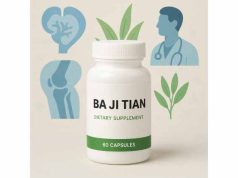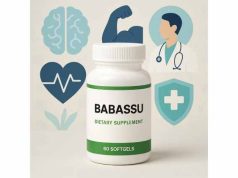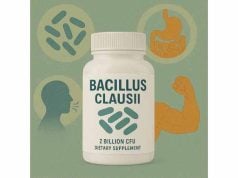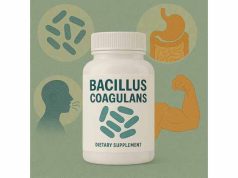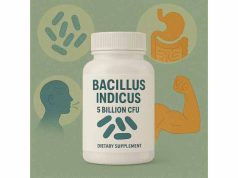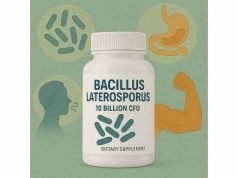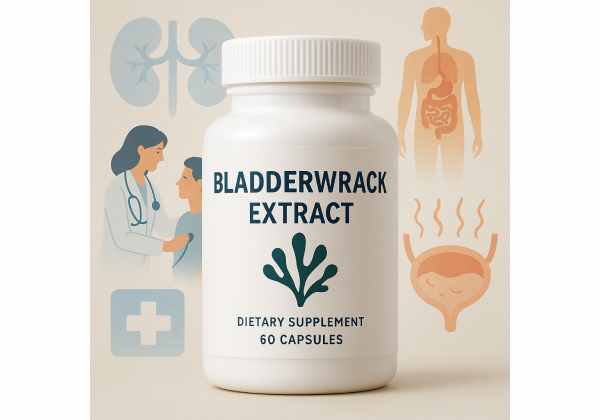
Bladderwrack extract is rapidly gaining attention as a natural supplement prized for its potential impact on thyroid function, metabolism, weight management, and skin health. Derived from the brown seaweed Fucus vesiculosus, bladderwrack is packed with essential nutrients like iodine, antioxidants, and bioactive compounds that may offer a range of health benefits. Whether you’re curious about supporting your energy levels, managing your weight, or looking for new natural options for joint and digestive health, bladderwrack extract offers unique properties worth exploring. This guide covers the most important facts, practical uses, evidence-backed benefits, optimal dosages, and safety insights to help you make informed decisions about bladderwrack extract.
Key Takeaways
- Bladderwrack extract is a rich source of iodine, supporting thyroid health and normal metabolism.
- Potential benefits include weight management, improved skin health, and reduced inflammation due to antioxidants like fucoidan.
- Scientific studies highlight possible support for joint comfort and digestive health.
- Not suitable for everyone: Individuals with thyroid disorders or on certain medications should exercise caution.
- Dosage and safety vary: Always consult a healthcare professional before adding bladderwrack extract to your routine.
Table of Contents
- Bladderwrack Extract Overview: What It Is and Its Role in Natural Health
- How Bladderwrack Extract Works: Mechanisms and Biological Effects
- Evidence-Based Benefits and Therapeutic Uses of Bladderwrack Extract
- Bladderwrack Extract Safety, Side Effects, and Interactions Guide
- Dosage, Usage, Timing, and Best Practices for Bladderwrack Extract
- Frequently Asked Questions About Bladderwrack Extract
Bladderwrack Extract Overview: What It Is and Its Role in Natural Health
Bladderwrack extract is a concentrated form of nutrients and bioactive compounds obtained from the marine seaweed known scientifically as Fucus vesiculosus. Commonly found along the coasts of the North Atlantic and Pacific Oceans, bladderwrack has a long history of use in traditional herbal medicine, especially for thyroid support and general wellness.
What Makes Bladderwrack Unique?
The primary reason for bladderwrack’s popularity is its exceptionally high iodine content. Iodine is a trace mineral essential for healthy thyroid function—a gland in your neck responsible for regulating metabolism, energy levels, and hormone balance. Unlike many land-based plants, bladderwrack naturally absorbs and concentrates iodine and other minerals from seawater, making it one of the richest plant sources of this nutrient.
But bladderwrack’s value isn’t limited to iodine. It also contains:
- Fucoidan: A unique type of sulfated polysaccharide, fucoidan has attracted scientific interest for its antioxidant, anti-inflammatory, and potential anti-cancer properties.
- Alginate: Known for its fiber-like properties, alginate may help support digestive health and slow carbohydrate absorption.
- Vitamins and Minerals: Bladderwrack provides vitamins A, C, E, and a broad spectrum of trace minerals such as zinc, magnesium, and calcium.
Traditional and Modern Uses
Historically, bladderwrack was used to treat goiter (an enlarged thyroid gland due to iodine deficiency) and support metabolism. In modern wellness circles, it’s often sought for:
- Supporting healthy thyroid activity
- Weight management and metabolic balance
- Joint comfort and inflammation reduction
- Skin health (applied topically or taken internally)
- Digestive support due to its fiber and prebiotic compounds
Forms and Accessibility
Bladderwrack extract is available in capsules, powders, tinctures, teas, and even topical preparations. Many modern supplements standardize the extract for iodine content or for specific active compounds like fucoidan, making it easier to manage dosing and quality.
Why Are People Taking Bladderwrack Today?
With increased interest in plant-based wellness and functional nutrition, bladderwrack appeals to those seeking natural ways to:
- Address mild thyroid imbalance or low iodine intake
- Support healthy weight and metabolism, especially when paired with an active lifestyle
- Reduce joint stiffness and support an anti-inflammatory diet
- Explore new approaches to gut and skin health
While bladderwrack extract holds promise, it’s important to recognize that its powerful biological effects also mean it’s not appropriate for everyone. Proper guidance and awareness of individual health needs are essential.
How Bladderwrack Extract Works: Mechanisms and Biological Effects
Bladderwrack extract’s influence on health can be traced to a complex interplay of naturally occurring compounds, each with distinct physiological actions. Understanding these mechanisms is crucial for anyone considering this supplement, especially if you’re interested in thyroid health, metabolism, inflammation, or digestive support.
1. Iodine Content and Thyroid Function
The standout feature of bladderwrack extract is its high natural iodine concentration. Iodine is vital for synthesizing thyroid hormones—mainly thyroxine (T4) and triiodothyronine (T3)—which regulate energy production, metabolism, temperature, and growth.
- How It Works: When you consume bladderwrack extract, your body absorbs iodine, which the thyroid gland uses to produce its hormones. These hormones then travel throughout the body, controlling metabolic rate, energy levels, and the balance of other hormones.
- Implications: For those with mild iodine deficiency or suboptimal thyroid activity (hypothyroidism), bladderwrack may help restore balance. However, excessive intake can overstimulate the thyroid, potentially leading to hyperthyroidism or other thyroid dysfunctions.
2. Fucoidan and Polyphenol Antioxidants
Fucoidan is a unique bioactive carbohydrate found in brown seaweeds like bladderwrack. It’s being studied for its anti-inflammatory, immune-modulating, and potential anti-cancer effects.
- Mechanisms: Fucoidan appears to:
- Inhibit inflammatory pathways in the body, reducing markers linked to chronic inflammation.
- Support healthy immune responses by modulating the activity of white blood cells and cytokines.
- Act as a potent antioxidant, neutralizing free radicals that can damage cells and accelerate aging.
- Potential Health Impact: These actions may translate to benefits for joint comfort, immune defense, and healthy aging.
3. Alginate and Fiber-Related Effects
Bladderwrack is rich in alginates, natural fibers that form gels when combined with water.
- Digestive Impact: Alginate can slow gastric emptying, potentially helping with satiety (the feeling of fullness) and moderating blood sugar spikes after meals. It may also support gut health by acting as a prebiotic—feeding beneficial bacteria in the intestines.
- Binding Properties: Alginate can bind to certain toxins and heavy metals in the digestive tract, aiding their excretion.
4. Antioxidant Vitamins and Minerals
Bladderwrack provides a spectrum of vitamins (A, C, E) and minerals (zinc, selenium, magnesium) that support overall antioxidant defense systems. These micronutrients:
- Help neutralize harmful free radicals
- Support skin health and tissue repair
- Contribute to immune resilience
5. Hormone and Metabolic Modulation
Emerging research suggests that bladderwrack extract may influence the balance of certain sex hormones. For example, some studies indicate it could help regulate estrogen levels, possibly contributing to hormonal harmony in women.
Key Biological Takeaways:
- The benefits—and risks—of bladderwrack depend heavily on your individual nutritional needs, especially regarding iodine status and thyroid health.
- Its unique polysaccharides (fucoidan and alginate) distinguish bladderwrack from other seaweeds, with potential applications for immune health, joint comfort, and digestive balance.
- As a natural antioxidant powerhouse, bladderwrack extract supports cellular health and resilience to environmental stressors.
Important Safety Note: Because bladderwrack’s biological effects are potent, consulting a healthcare provider is essential—especially if you have thyroid issues, are pregnant, or take medications that affect thyroid or hormone levels.
Evidence-Based Benefits and Therapeutic Uses of Bladderwrack Extract
Bladderwrack extract has earned its place among popular herbal supplements thanks to a combination of traditional knowledge and emerging scientific evidence. While more research is needed to confirm some uses, many people turn to bladderwrack for a variety of potential health benefits. Let’s explore the most substantiated areas where bladderwrack extract may make a difference.
1. Thyroid Support and Metabolic Health
- Primary Benefit: Bladderwrack extract is widely recognized for its impact on thyroid function due to its rich iodine content.
- Who May Benefit: People with low dietary iodine intake, mild hypothyroidism, or sluggish metabolism may see improvements in energy, mood, and metabolic rate after correcting an iodine deficit.
- Limitations: Not recommended for those with hyperthyroidism or autoimmune thyroid disease, as extra iodine can worsen symptoms or provoke thyroid dysfunction.
2. Weight Management and Appetite Regulation
- How It Helps: Bladderwrack’s influence on metabolism is twofold:
- By supporting optimal thyroid hormone production, it helps regulate basal metabolic rate (the calories you burn at rest).
- The alginate fiber in bladderwrack may slow the absorption of carbohydrates and increase satiety, helping control appetite and potentially reducing overall calorie intake.
- Supporting Studies: Some small studies have noted reduced hunger and improved feelings of fullness with seaweed-derived alginate supplements.
3. Joint Comfort and Inflammation Relief
- Mechanisms: Fucoidan, a key compound in bladderwrack, has been researched for its anti-inflammatory and immunomodulatory properties.
- Practical Benefit: Some individuals report less joint stiffness and greater comfort after using bladderwrack extract regularly. These effects may be particularly relevant for those with mild joint issues or inflammatory conditions, though results can vary.
- Research Status: Most findings come from laboratory or animal studies; human evidence is promising but still preliminary.
4. Skin Health and Anti-Aging Applications
- Why It Works: Bladderwrack extract’s antioxidants help fight oxidative stress—one of the main drivers of skin aging. Topical preparations are sometimes used to soothe irritated skin, promote wound healing, or support moisture balance.
- Oral Benefits: Internal use may also benefit skin by supporting thyroid balance and overall cell health.
5. Digestive Health and Gut Support
- Fiber Action: The alginates in bladderwrack serve as prebiotic fibers, feeding beneficial gut bacteria and supporting healthy digestion.
- Toxin Binding: Alginate can bind to certain toxins in the digestive tract, assisting their safe elimination from the body.
6. Immune System Modulation
- Fucoidan Effects: Some early evidence suggests that fucoidan can modulate immune function, possibly enhancing the body’s defenses against infections or abnormal cell growth.
- Caveat: While laboratory results are promising, human clinical trials are limited, and more research is needed to confirm these immune benefits.
7. Women’s Health and Hormone Balance
- Potential Applications: There is emerging interest in bladderwrack’s ability to influence estrogen metabolism. Some research suggests it may play a role in promoting hormonal balance, although the data is early-stage.
- Not for Everyone: Women with hormone-sensitive conditions or those on hormone therapy should speak with a healthcare provider before using bladderwrack.
Summary Table: Potential Benefits and Who Should Use Caution
| Potential Benefit | Most Likely to Benefit | Should Use Caution |
|---|---|---|
| Thyroid support | Mild hypothyroidism | Hyperthyroidism, thyroid meds |
| Weight management | Low metabolism, dieters | Pregnancy, thyroid issues |
| Joint comfort | Mild arthritis, aging | Bleeding disorders |
| Skin health | Aging, dry/irritated skin | Sensitive skin, allergies |
| Digestive/gut support | IBS, poor digestion | Gastrointestinal conditions |
| Immune modulation | Low immunity | Autoimmune conditions |
| Hormone balance | Irregular cycles | Hormone-sensitive conditions |
Final Thoughts
While bladderwrack extract is not a cure-all, its unique blend of iodine, antioxidants, and bioactive polysaccharides offers targeted support for several common health concerns. As with any supplement, benefits are most likely when used to address a specific deficiency or imbalance—so it’s best integrated as part of a comprehensive wellness plan under the guidance of a knowledgeable health professional.
Bladderwrack Extract Safety, Side Effects, and Interactions Guide
When considering bladderwrack extract as part of your wellness regimen, safety and proper use should be your top priorities. While this natural seaweed supplement offers a variety of health benefits, it also carries potential risks, especially if taken without medical guidance or combined with certain medications. Understanding these safety aspects will empower you to make informed, responsible decisions about your health.
Who Should Be Cautious With Bladderwrack?
Bladderwrack’s rich iodine content means it can significantly affect the thyroid gland. Individuals with any of the following should exercise special caution:
- Pre-existing thyroid disorders: If you have hyperthyroidism (overactive thyroid), Hashimoto’s thyroiditis, or are on thyroid hormone replacement therapy, consult your doctor before use.
- Pregnancy and breastfeeding: Iodine needs change during these times, and excess intake can impact both mother and baby. Medical supervision is essential.
- Allergy to iodine or seaweed: People with known allergies should avoid bladderwrack, as allergic reactions can range from skin rashes to severe anaphylaxis.
- Bleeding disorders or use of anticoagulant medications: Bladderwrack contains vitamin K and compounds that may affect blood clotting, increasing the risk of bleeding.
Common Side Effects
For most people, bladderwrack extract is well tolerated when used at recommended doses for short periods. However, some users may experience:
- Digestive discomfort: Mild nausea, diarrhea, or bloating are possible, especially when starting supplementation.
- Altered thyroid function: Overconsumption of iodine can lead to symptoms of thyroid dysfunction, including fatigue, weight changes, rapid heart rate, anxiety, or temperature sensitivity.
- Skin reactions: Topical use may cause irritation or allergic dermatitis in sensitive individuals.
Potential Drug Interactions
Bladderwrack may interact with certain medications, leading to increased side effects or reduced effectiveness. Key interactions to be aware of include:
- Thyroid medications: Such as levothyroxine or antithyroid drugs. Extra iodine can disrupt intended hormone balance.
- Blood thinners: Like warfarin or aspirin. Bladderwrack may enhance anticoagulant effects, raising bleeding risk.
- Lithium: Used for mood disorders, as both bladderwrack and lithium can affect thyroid function.
- Other supplements or herbs: Especially those containing iodine (kelp, sea moss) or that influence thyroid or immune function.
Heavy Metal Contamination Risks
As a marine plant, bladderwrack may accumulate heavy metals such as arsenic, lead, and mercury from polluted waters. High-quality supplements use raw materials tested for contaminants, but not all brands meet these standards. To reduce risk:
- Choose bladderwrack supplements from reputable manufacturers that provide third-party lab testing.
- Avoid sourcing raw seaweed directly from unmonitored coastal areas.
Safe Supplementation Practices
To minimize risks and maximize benefits:
- Start with the lowest effective dose recommended on the product label, and increase only if needed.
- Monitor for side effects: Stop use if you notice any unusual symptoms and consult your healthcare provider.
- Check all supplement labels: If you use a multivitamin or other seaweed supplements, make sure you’re not exceeding safe iodine levels.
- Regular thyroid check-ups: If you use bladderwrack long-term, periodic blood tests to assess thyroid hormone levels are wise.
Special Considerations for Sensitive Groups
- Children: Should not use bladderwrack extract unless specifically prescribed by a pediatrician for documented iodine deficiency.
- Older adults: More sensitive to thyroid fluctuations; start with extra caution and monitor closely.
When to Seek Medical Advice
Seek immediate medical attention if you experience signs of a severe allergic reaction (such as swelling, hives, difficulty breathing) or any symptoms of thyroid crisis (severe palpitations, confusion, extreme weakness).
Summary Table: Safety, Side Effects, and Interaction Overview
| Safety Aspect | What to Watch For | Who’s Most at Risk |
|---|---|---|
| Thyroid impact | Hypo/hyperthyroid symptoms | Thyroid disorder patients |
| Digestive upset | Nausea, diarrhea, bloating | New users, sensitive stomachs |
| Allergic reaction | Rash, swelling, breathing problems | Iodine/seaweed allergy |
| Medication interference | Changes in effect or side effects | Users of thyroid meds, blood thinners |
| Heavy metal risk | Accumulation over time | Long-term, high-dose users |
Informed, cautious use of bladderwrack extract can provide real health benefits, but it’s never a one-size-fits-all remedy. Always approach supplementation as part of a larger conversation with your healthcare provider.
Dosage, Usage, Timing, and Best Practices for Bladderwrack Extract
Choosing the right bladderwrack extract dosage and using it correctly are critical to maximizing its health benefits while minimizing potential risks. Because the iodine content of bladderwrack varies widely depending on source and preparation, dosing recommendations should always be guided by product labeling, your own health needs, and professional advice.
Typical Dosages and Forms
Bladderwrack extract is available in several forms:
- Capsules/Tablets: Usually standardized for iodine or fucoidan content; common doses range from 500 mg to 1,000 mg daily.
- Tinctures/Liquid Extracts: Allow flexible dosing; typical serving sizes are 1–2 ml, often diluted in water.
- Powders: Can be added to smoothies or foods; dosage varies, but 1–2 grams daily is common.
- Topical Creams/Ointments: Used for localized skin support; follow product instructions.
How Much Iodine is in Bladderwrack?
Iodine content can vary from 150 to 600 micrograms (mcg) per gram of dried bladderwrack. The recommended daily iodine intake for most adults is 150 mcg. Many bladderwrack supplements are formulated to deliver between 50% and 100% of the daily value per serving, but always check your specific product.
Best Timing and How to Take Bladderwrack Extract
- With or without food: Most users tolerate bladderwrack well on an empty stomach, but if you notice digestive discomfort, take it with meals.
- Daily consistency: To support thyroid health and metabolism, take bladderwrack at the same time each day.
- Short-term vs. long-term use: For correcting mild iodine deficiency, a course of a few weeks to several months may suffice. For ongoing metabolic or wellness support, intermittent use or lower doses may be preferable.
Combining Bladderwrack With Other Supplements
- Do not combine with other iodine-rich supplements (like kelp or sea moss) unless instructed by a professional.
- Can be paired with other antioxidants: Such as vitamin C or E for enhanced skin and cellular support.
- Not recommended with thyroid medications or blood thinners unless under direct supervision.
Signs You May Need to Adjust Your Dose
- Too much: Symptoms like rapid heartbeat, anxiety, sweating, or sudden weight changes may indicate excessive iodine or overstimulation of the thyroid.
- Too little: Persistent fatigue, cold sensitivity, or slow metabolism may indicate a need for more thyroid support—but always rule out other causes first.
Best Practices for Safe Use
- Consult your healthcare provider before starting bladderwrack, especially if you have thyroid, hormone, or autoimmune issues.
- Start low, go slow: Begin with the minimum recommended dose and increase only if needed and well tolerated.
- Track your health: Keep a simple journal of symptoms, energy, and mood changes while supplementing.
- Buy from reputable brands: Look for supplements that disclose iodine content, are third-party tested, and list seaweed source location.
Special Tips for Topical Use
- Patch test first: Apply a small amount to clean skin and wait 24 hours to check for any irritation.
- Combine with moisturizers: Many creams blend bladderwrack with shea butter or natural oils for improved skin absorption and comfort.
When to Stop Taking Bladderwrack
Discontinue use if you notice any concerning symptoms, or if directed by your doctor following lab tests or medication changes. For most people, bladderwrack is intended as a short-term, targeted supplement—not for indefinite, high-dose daily use.
Summary Table: Dosage and Usage Guidelines
| Form | Typical Dose | When/How to Use | Notes |
|---|---|---|---|
| Capsule | 500–1,000 mg/day | Once or twice daily | Check iodine content |
| Tincture | 1–2 ml/day | With water, daily | Follow label |
| Powder | 1–2 g/day | Mixed in food/drinks | Start low, increase slowly |
| Topical | As directed | On skin, 1–2x daily | Patch test first |
Using bladderwrack extract wisely can help you experience its unique benefits for thyroid health, metabolism, and overall well-being—while reducing risks of unwanted side effects.
Frequently Asked Questions About Bladderwrack Extract
What is bladderwrack extract good for?
Bladderwrack extract is most commonly used to support thyroid health, boost metabolism, aid weight management, promote healthy skin, and reduce inflammation. Its high iodine content makes it particularly helpful for individuals with low iodine intake or mild hypothyroidism.
Does bladderwrack extract help with weight loss?
Bladderwrack may support weight loss efforts by boosting metabolism through thyroid support and providing alginate fiber, which can promote satiety and slow carbohydrate absorption. However, it should be used alongside a balanced diet and exercise for best results.
Can bladderwrack extract cause side effects?
Yes, potential side effects include digestive upset, altered thyroid function, allergic reactions, and increased risk of bleeding in people on anticoagulants. Always follow recommended dosages and consult your healthcare provider before starting bladderwrack extract.
How much bladderwrack extract should I take daily?
Most bladderwrack supplements suggest 500–1,000 mg daily, standardized to provide 150 mcg iodine or less per day. Always check product labels and start with the lowest effective dose, especially if you have thyroid concerns.
Is bladderwrack safe to take every day?
Bladderwrack extract can be safe for short-term use in healthy adults when used as directed. Long-term or high-dose use may increase the risk of side effects, especially thyroid dysfunction. Consult your doctor for guidance on duration and monitoring.
Can I take bladderwrack with thyroid medication?
Combining bladderwrack with thyroid medication can be risky, as extra iodine may interfere with hormone balance. Always consult your healthcare provider before using bladderwrack if you are on thyroid medication.
Does bladderwrack extract contain heavy metals?
Like other seaweeds, bladderwrack can accumulate heavy metals from the environment. Choose supplements from reputable brands that test for contaminants to reduce this risk.
Disclaimer:
This article is for educational purposes only and does not substitute for professional medical advice, diagnosis, or treatment. Always consult a qualified healthcare provider before starting any supplement, especially if you have underlying health conditions, take prescription medications, or are pregnant or breastfeeding.
If you found this guide on bladderwrack extract useful, please consider sharing it with friends or family on Facebook, X (formerly Twitter), or your favorite social platform. Your support helps us continue providing trusted, evidence-based wellness content. Don’t forget to follow us on social media for more updates and health tips!

